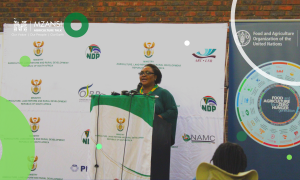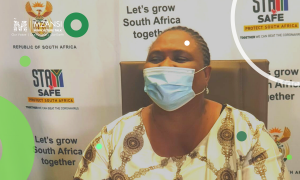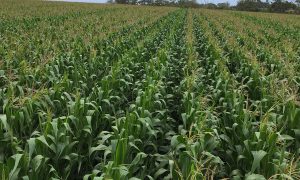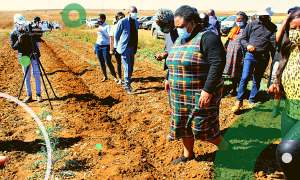The wool industry has gained popularity in communal areas (especially in the Eastern Cape) and has increased many folds from what it was in 1998 (in volume and value terms).
The prices received have increased more than nine times for both commercial and communal farmers. The increases in prices of wool alone could have acted as the single sources of interest in wool production but the popularity of sheep meat cannot be understated.
On a bad side, wool processing capacity shrank as the industry was growing, justified to some extent by the explosion of the Chinese processing that leads to more demand for wool.
Overview (transformation, volumes and values)
The wool industry increased from just over 223 000 kg or 223 tons of wool in 1999 that was worth R1,5 million to a huge figure of 5,4 million kg or 5 422 tons in 2018 that was worth about R384 million (as shown in Figure 1).
The wool industry is one of the industries that has managed to source wool from communal areas. The presence can be seen as mirrored by the spread of the wool shearing shed in the wool-producing areas provide an indication of active participation in wool production.
This built programme was made possible by the government and the wool industry through a form of public-private partnership. The wool industry represented by the National Wool Growers Association, through the finances received from the Wool Trust employed Technical Advisors who are assisting farmers with technical knowledge – ranging from how the animal is taken care off to wool shearing, sorting and baling.
These technical advisors play the role of mentorship and training to communal wool growers. The public-private partnership also covered the livestock improvement programme that was done through the ram distribution to improve the genetical make-up of the communal flock.
All of these interventions including others that I may have missed, led to an increased volume produced from communal areas as well as the quality of the clip that led to prices increases. There are other important players in the partnership like the Agricultural Research Council (ARC), Cape Wools SA and the NWGA.
Unfortunate erosion of domestic processing capacity
South Africa’s domestic capacity to process wool is almost completely lost with minimal still existing for wool washing.
South Africa used to have about five or six processing plants at the time of the deregulation of the wool industry to only one currently. This means the country is extremely vulnerable to market closures implemented by the countries that import our wool as a result of outbreaks of quarantined diseases.
A case in point is China’s ban on South African wool because of the outbreak of the Foot-and-Mouth Disease (FMD). The wool industry gets to suffer even if the outbreak is picked in areas outside the wool-producing regions. One of the highlighted challenges of South Africa is the compromised nature of the bio-security system that does not have the most advanced levels of traceability.
Prices (comparison)
The price differences between commercial and communal farmers is depicted in Figure 2. It can be seen that the prices/kg received by both types of farmers increased over time remarkably.
The increases are huge, from R12/kg in Year 1 to R99/kg in Year 14 for commercial farmers while increasing from R5/kg to an impressive R70/kg in Year 14 for communal farmers. Interpreted in relative terms, this means communal farmers have improved their practises and as a result, the prices they receive have improved by almost 20% from being 50% of the commercial price in Year 1 to 70% in Year 14. However, put in rand and cents the difference is more in Year 14 (about R23/kg) than it was in Year 1 (around R6/kg).
Challenges
- Stock and Wool theft: wool theft has become one of the biggest problems of the wool industry more pronounced in communal areas. There are even cases of trucks that are even highjacked. Stock theft is also another challenge that face farmers in the industry as a whole. There are even stories of animals/sheep that get stolen and to come back home without the priced hair/wool.
- Misunderstandings or ideological differences: the representative body of wool or sheep farmers has been known to be the National Wool Growers Association but recently an association with representation of communal farmers was formed (Communal Wool Growers Association) which is driven primarily by Eastern Cape Communal Farmers. The EC-CWGA argue that the position of the NWGA in respect of the thorny issue of land reform is not their position and yet the formation of the body to show and preserve their position.
- Boi-security: the wool industry gets affected by outbreaks that are not necessarily found in the wool-producing areas (such as FMD outbreak). The measures that were put in place to allow the shipments of South African greasy wool to China (pre-heating) are proving to erode the competitiveness of the industry and they mean additional costs.
- Bakkie buyers: there are many wool speculators who buy wool from communal farmers at low prices and sell it at market prices. The fictitious advantage of these speculators is that they pay the communal farmers on spot. Even though, South Africa’s marketing environment is liberal these speculators are not assisting the communal producers of wool.
Closing remarks
The industry is growing, the communal sector is playing an important role. Almost all of the wool clip is exported as greasy wool (primarily to China) giving an indication of non-existence or very minimal processing capacity locally. If processing is one of the pillars of agricultural industrial development, then this needs to be prioritised. An average of R28 difference in the prices received by communal farmers from those of their commercial counterparts is too big to be taken as a norm and efforts to reduce it must be put in place. The wool industry needs to relook at its vision in respect to possible re-industrialisation and re-visioning to bridge the gap between commercial farmers interests and those of communal farmers.
Article by: Mr Bonani Nyhodo
Disclaimer: The views and opinions expressed in this article are those of the author. They do not purport to reflect the opinions or views of Mzansi Agriculture Talk or its members.




















